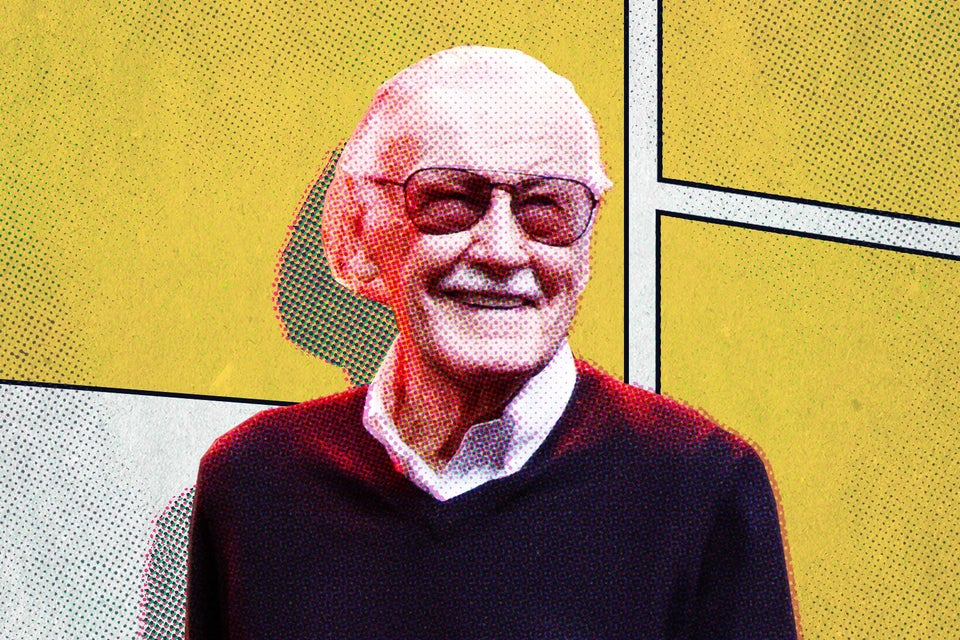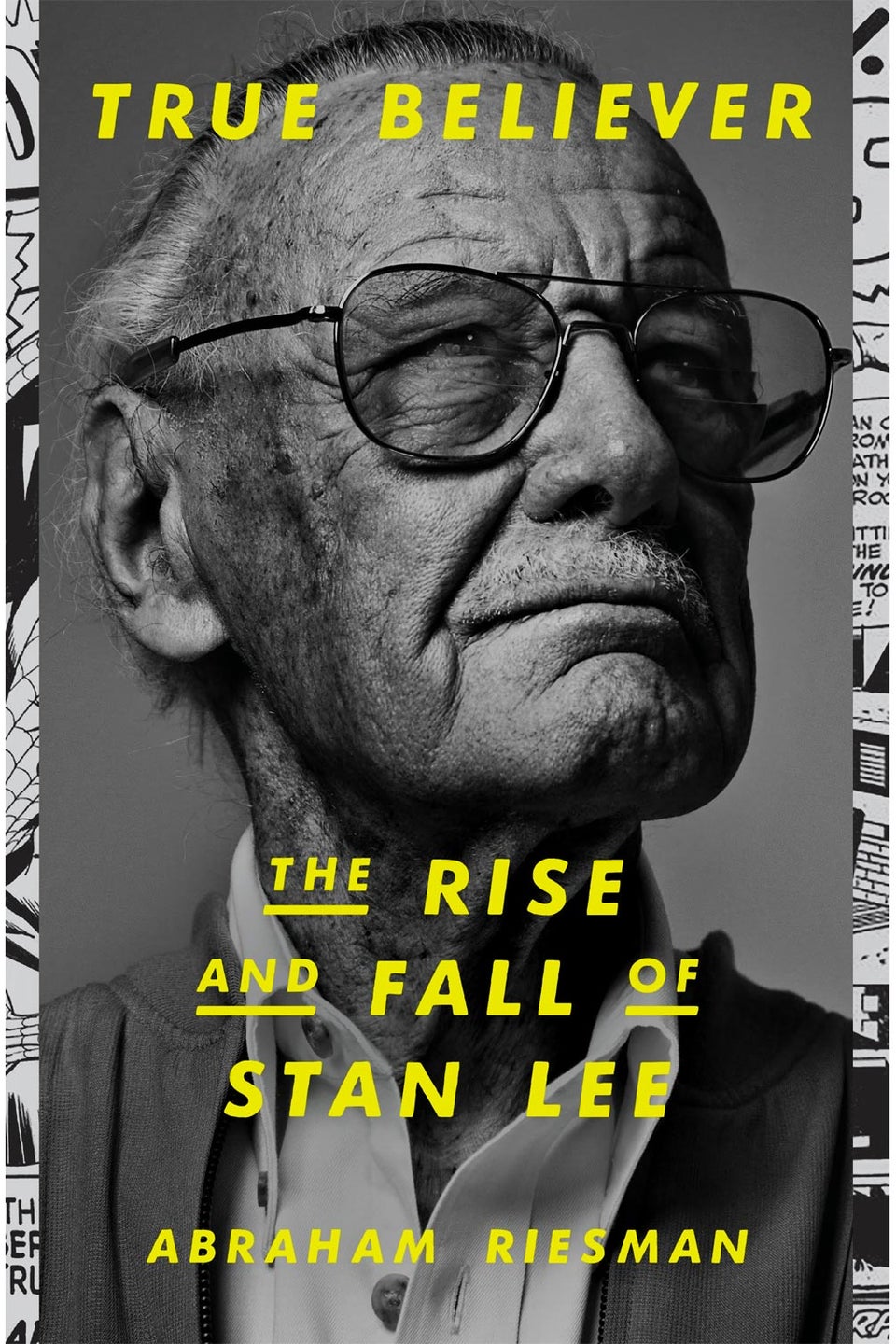A Sense of Doubt blog post #2191 - Stan Lee - not the innovator in chief of Marvel Comics
I wanted to find a comic book related post for today, and then here is this article, published today, at the top of my SLATE feed.
And it's on one of my favorite subjects: Stan Lee rode on the backs of great artists and creators like Jack Kirby and Steve Ditko to build the Marvel Comics that revolutionized the art form in the early 1960s, but it was not ALL Stan Lee driven and in fact it may surely have been MORE of the work Kirby and Ditko and much, much less about the meager contributions of Stan Lee.
Not to speak ill of the dead, and surely Stan Lee made his contributions and served as the face of Marvel Comics for many years in a way the company needed.
But those great ideas, those great stories, and of course the amazing art work was Kirby and Ditko and later Romita, Buscema, Colan, Kane, Trimpe, and so many more.
The Stan Lee Story That Tore Apart Marvel Comics
Jack Kirby and Steve Ditko were heroes in “the House of Ideas.” But a 1966 profile gave all the credit to one superman.
FEB 16, 20215:50 AM
 |
| Lee in 2017. Photo illustration by Slate. Photo by Rich Polk/Getty Images for Entertainment Weekly. |
This excerpt is adapted with permission from True Believer: The Rise and Fall of Stan Lee by Abraham Riesman, published by Crown Publishing, a division of Penguin Random House, copyright 2021 by Abraham Riesman.
Stan Lee was good at projecting an air of hipness. Nowhere was that more apparent than in his dealings with a reporter named Nat Freedland (née Friedland; he changed it for his byline because he “thought Friedland was a stupid-looking name”), who was working on assignment for the New York Herald Tribune in the mid-1960s. Freedland had been working for a small paper called the Long Island Press and was trying to do some freelance magazine writing on the side. “I wanted to be the next Tom Wolfe; I wanted fame; I wanted to be a first-call for big stories,” Freedland recalls. “I was waiting for little niches that Tom Wolfe hadn’t covered yet.” He landed on a topic idea: “Spider-Man, Marvel, and Stan Lee were the really big thing in New York at the time,” he says, citing a contemporaneous Village Voice column as something that had sparked interest in the comics among “pop-culture snobs.”
He pitched a feature on Marvel to the editor of the Herald Tribune’s magazine section, James Bellows, and got it approved. “I called Marvel, I got Stan Lee on the phone, I said what assignment I had, and he was excited,” Freedland says. The journalist came to the Marvel offices for only one afternoon in late 1965. One component of the visit was an interview with Lee, who turned on the charm. “There are little touches I can see now, in retrospect—little touches of being an egomaniac and taking all the credit,” Freedland says. “But he told me about all the stuff, and I thought it was cute and tremendous. I saw artists coming around, but I didn’t talk to them much.”
The one quasi-interaction he did have with an artist came when Lee contrived to have a story conference between him and Jack Kirby to discuss an upcoming issue of The Fantastic Four, one of the many smash comic-book series that were co-written by the two men and drawn by Kirby (others had included The X-Men, The Avengers, and The Incredible Hulk). “And Lee is talking to Kirby in very general terms and Kirby’s going, ‘Uh-huh’—he’s not very verbal,” Freedland recalls. Lee started doing his trademark storytelling acrobatics, leaping around and throwing mock punches. “Great, great,” was all Kirby said when Lee was done. Kirby maintained that the whole thing was a staged stunt—and, for Lee, a successful one. “Jack said that there was not a plotting session for a real issue,” recalls Kirby’s assistant and biographer, Mark Evanier. “They had already plotted that issue beforehand, and they were basically recreating it for the reporter. And one of the reasons Jack didn’t say more in the meeting was he wasn’t thinking about a story. He wasn’t gonna take anything home and draw that story. The story was done for him.” Indeed, according to Kirby, he was by that point primarily just dictating to Lee what he was going to do in a given story, and those meager plot conversations weren’t even happening in person; they were all over the phone. Freedland knew none of this and didn’t bother to find it out. “I was so enchanted by the whole thing,” he says. The staged scene wound up as the central sequence in the Herald Tribune story.
While chatting with Freedland that day, Lee also tore into Marvel writer/artist Steve Ditko, the co-creator of Spider-Man, with his signature passive aggression. “I don’t plot Spider-Man anymore,” Lee told the reporter. “Steve Ditko, the artist, has been doing the stories. I guess I’ll leave him alone until sales start to slip. Since Spidey got so popular, Ditko thinks he’s the genius of the world. We were arguing so much over plotlines I told him to start making up his own stories.” These digs wound up in the profile, too.
The Herald Tribune article hit stands a few weeks after Freedland’s interviews, on Jan. 9, 1966. It was classic New Journalism, its language simultaneously flip and hip, and it fawned over Lee. Freedland wrote that Lee was “an ultra–Madison Avenue, rangy lookalike of Rex Harrison” with “humorous eyes, thinning but tasteful gray hair, the brightest-colored Ivy wardrobe in captivity and a deep suntan” who “dreamed up the ‘Marvel Age of Comics’ in 1961.’ ” It recounted legendary Italian film director Federico Fellini’s fascinated and worshipful visit with Lee from a few months prior, his recent appearance at Bard College, the bombastic magic of the Fantastic Four, the neurotic charm of Spidey, and claimed that “practically every costumed hero in Lee’s new Marvel Comics mythology displaces enough symbolic weight to become grist for an English Lit. Ph.D. thesis.” Freedland even parroted Lee’s claim about winning a Herald Tribune essay contest as a kid. (He did not.) By contrast, in the published piece, Kirby went uninterviewed, appeared passive, and was described in the following terms: “If you stood next to him on the subway you would peg him for the assistant foreman in a girdle factory.”
he story was published after decades of intermittent tension between the two men over credit for creation of the characters they wrote and various other interpersonal conflicts. The New York Herald Tribune piece, it turned out, was something like the last straw.
Mark Evanier recalled, “Jack’s wife, Roz, read the article early the Sunday morning it came out, woke Jack up to read it,” then “Jack phoned Stan at home to wake him up and complain. Both men later recalled that the collaboration was never the same after that day, and it was more than just an injured ego at work.”
Freedland has lived to regret what he wrote. “I feel sad that I was one of the things that made Kirby feel he was being shortchanged, which, in retrospect, decades later, I can see, yeah, he was,” he tells me. “ ‘Girdle factory.’ Oh, God. Oh, poor Kirby. What the hell was I thinking?”
Freedland says that when the article came out, he promoted it by appearing on Jean Shepherd’s popular radio show and repeating his pro-Stan account of Marvel’s popularity. As the weeks went on, Freedland was surprised to find that Lee didn’t mention all this publicity in the backmatter of any of the comics. He was perplexed—after all, Lee was usually eager to boast about any and all mentions the company received. “I called Marvel and talked to Stan Lee and said, ‘How come you didn’t put me in your column, now that the thing is out?’ ” Freedland recalls. “And he told me about Kirby being upset—I think he put it as, ‘upset about having his feelings hurt’—and I thought, Gee, I can see why he would.”
Kirby stayed at Marvel for a few more years out of necessity—steady work was hard to find in the fly-by-night comics industry of the day—but left for rival publisher DC in 1970. With the exception of an ill-fated graphic novel in 1978, Lee and Kirby never directly collaborated again, and Kirby and his family would often note that the Herald Tribune article had been a decisive factor in severing that relationship. Ditko didn’t wait nearly as long: By the time the article was published, he’d already flown the coop. He never worked with Lee again and went to his grave furious about the way Lee had treated him.
Nevertheless, after spending so much time with Lee, Freedland remained enchanted and landed on a new idea: “I wanted to be a Marvel writer,” he says. “There was a writing test, and I took it and turned it in, and I got the word back from someone, saying I didn’t have the style or quality—by which I mean characteristics—of writing stuff that would work with Marvel Comics.” Freedland was one of countless admirers who were now dreaming of working for what was known as the House of Ideas. To all appearances, the tide was high for Marvel, and Lee was the glorious captain of the ship. But with Ditko’s departure and Kirby’s grim resignation to the fact that he would never be fully appreciated, the Marvel Age of Comics was, in a way, already over.
True Believer: The Rise and Fall of Stan Lee
By Abraham Riesman
+++++++++++++++++++++++++++++++++++++++++++++++++++++++++++++++++++++++
+++++++++++++++++++++++++++++++++++++++++++++++++++++++++++++++++++++++
- Bloggery committed by chris tower - 2102.16 - 10:10
- Days ago = 2055 days ago
- New note - On 1807.06, I ceased daily transmission of my Hey Mom feature after three years of daily conversations. I plan to continue Hey Mom posts at least twice per week but will continue to post the days since ("Days Ago") count on my blog each day. The blog entry numbering in the title has changed to reflect total Sense of Doubt posts since I began the blog on 0705.04, which include Hey Mom posts, Daily Bowie posts, and Sense of Doubt posts. Hey Mom posts will still be numbered sequentially. New Hey Mom posts will use the same format as all the other Hey Mom posts; all other posts will feature this format seen here.


























No comments:
Post a Comment